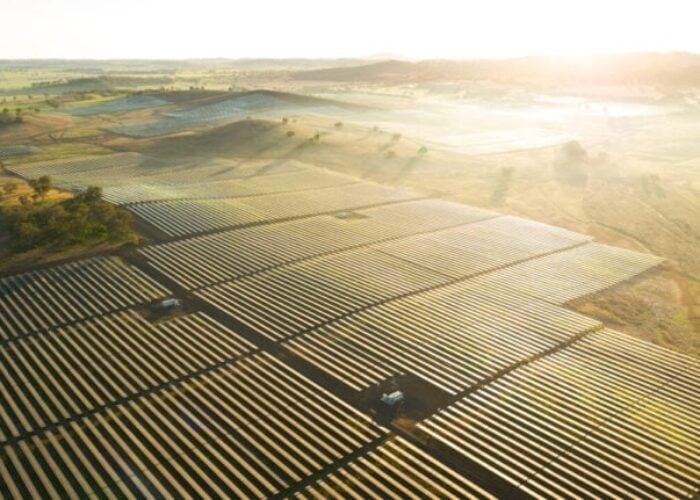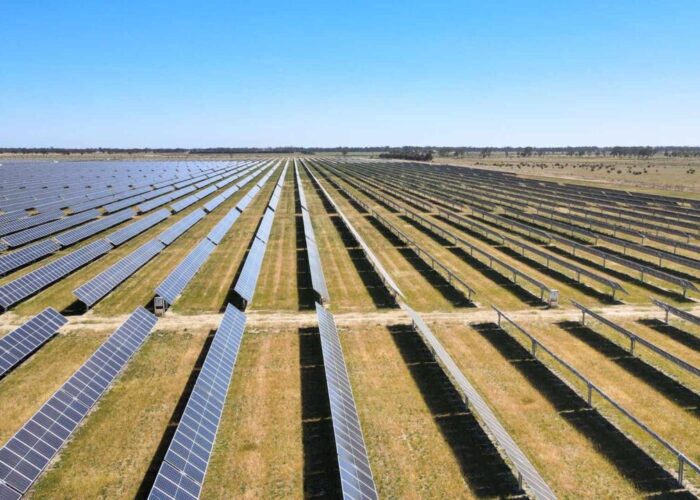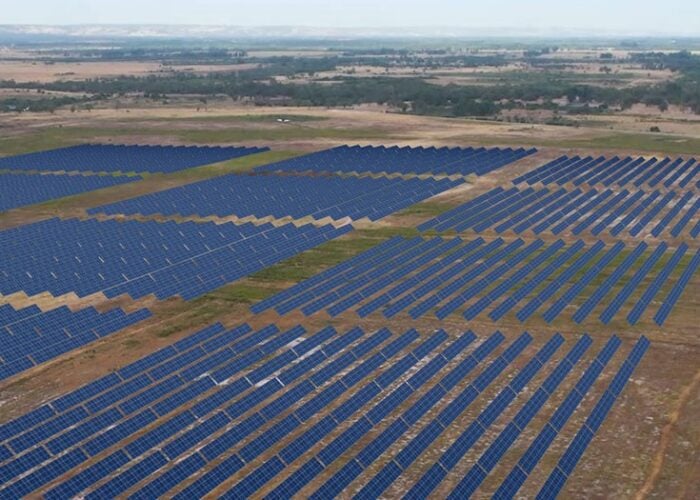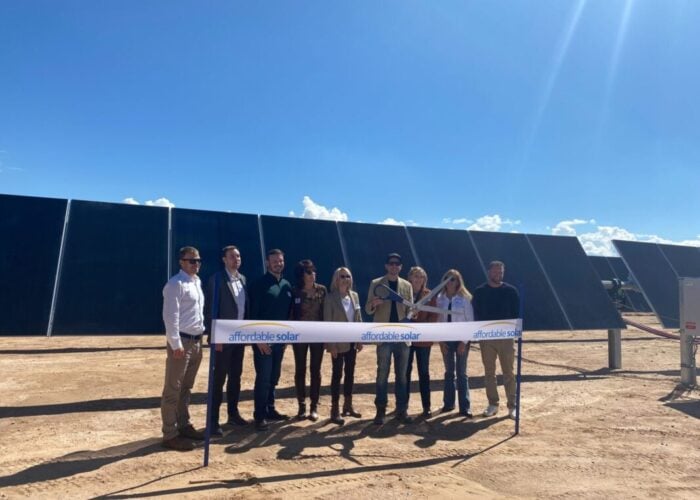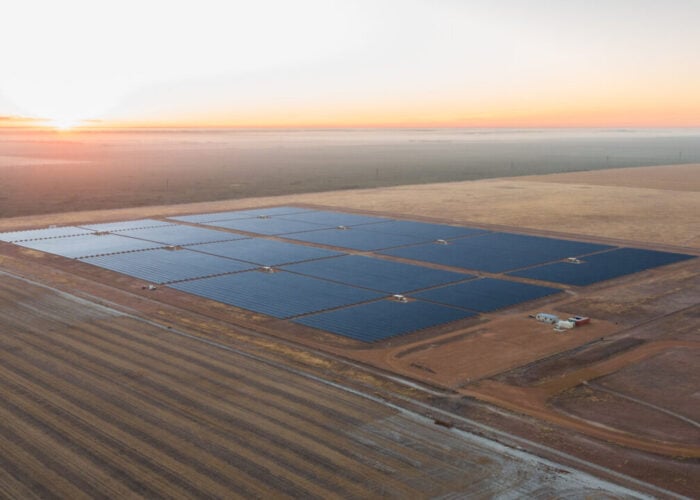The chief of California’s bulk transmission system operator has slammed net metering as a “subsidy” of wealthy households by poorer ones, claiming it represents an “economic justice issue”.
Steve Berberich, CEO of CA ISO (California Independent System Operator), responsible for overseeing competition in wholesale markets and managing reliability of the grid – including long-term planning – said the issue of net metering was coming to a head in the state. Berberich was speaking at last week’s Berlin Energy Transition Dialogue, at a panel discussion on how to use the grid and grid resources such as demand side response, to integrate more renewables.
Try Premium for just $1
- Full premium access for the first month at only $1
- Converts to an annual rate after 30 days unless cancelled
- Cancel anytime during the trial period
Premium Benefits
- Expert industry analysis and interviews
- Digital access to PV Tech Power journal
- Exclusive event discounts
Or get the full Premium subscription right away
Or continue reading this article for free
“We do have a very aggressive NEM programme in California,” Berberich said.
“It doesn’t directly impact us, except [that] with this growth of renewables on the distribution system, what we’re finding is that we need to harness those resources to help maintain frequency on the bulk transmission system.”
Net metering is the predominantly used method in the US to incentivise the adoption of solar at residential level, paying households for the power they feed back into the grid from their rooftop PV system. It exists in a majority of states, around 40, with the California Public Utilities’ Commission (CPUC), the regulator, voting to keep the policy in place, albeit in a revised “Net Metering 2.0” form, in late January.
California’s new iteration of the scheme placed more value on time-of-use and generation than before, seeking to attach more value to the matching of load with demand. Customers will have to pay interconnection fees estimated to be between around US$75 and US$150 to get started. However, three investor-owned utilities: San Diego Gas & Electric (SDG&E), Pacific Gas & Electric (PG&E) and Southern California Edison (SCE) have asked the regulator to “rehear” the case.
Berberich made the same argument put forward by SDG&E last week.
“The policy issues are starting to come to head. In California, there’s a subsidy roughly from one group of ratepayers to another group of ratepayers of about a billion-two (US$1.2 billion) a year, where those who have solar get a subsidy from those who don’t have solar.”
The utilities claim, as have lobbying groups alleged in the past to be funded by pro-fossil fuel interests and recently by billionaire investor Warrent Buffet, that the scheme causes an imbalance as net metered customers are “subsidised” to use the grid by the rest of the utility’s ratepayer base. In Nevada and Hawaii, this has led to drastic scaling back of the schemes to only pay the greatly reduced wholesale rate rather than the higher retail prices paid in California or New York.
“The issue in California is those with solar tend to be the wealthier people who live on the coast, they both have money and they don’t use a lot of power so the people who are paying for it then are the non-solar people and generally, it’s poor people. That is becoming a policy issue in California, it becomes an economic justice issue and we’re having to deal with that,” Berberich said.
Industry group CalSEIA hits back
As with last week, when SDG&E was met with a protest march, Berberich’s words met with fierce opposition. California Solar Energy Industries’ Association (CALSEIA) policy director Brad Heavner responded to the CA ISO boss’ assessment with a scathing counter-argument.
“We are all bombarded with utility rhetoric, but the actual numbers show a very different picture,” Heavner said in a statement emailed to PV Tech.
“Low to medium-income neighborhoods have seen an increasing portion of solar installations in California in recent years, and the wealthiest neighborhoods are seeing their portion decrease.”
Heavner said it was ultimately not meant to be the responsibility of ratepayers to cross-subsidise one another and said that more long-term approaches to deal with the issue were needed.
“Net metering will only become a subsidy if grid managers continue to ignore it and overbuild infrastructure. One of the best ways to help low-income ratepayers reduce their energy costs is to help the solar industry continue to reduce costs rather then slapping new fees on solar that will take it out of reach for low-income households as it was previously.”
Heavner concluded by stating that he wanted the thinking behind grids and market design to fall more in line with the trend toward growing distributed resources.
“Players at all levels of the electric grid need to embrace the future, using distributed generation for grid support and ushering in an era of microgrids rather than clinging to the centralised past.”
Heavner also forwarded a whitepaper by energy consultancy Kevala, “Income Distribution of Solar Rooftop Customers”.
The report claimed that while the most recent owner occupier survey of income in California was conducted in 2000, 65% of installations are “deployed to zip codes where the median owner occupied income is less than US$70,000 a year”.
While the report’s authors admitted that adoption at the very lowest income bands has remained flat at around a 5% share of the total, the highest income areas have dropped their share significantly, from 19% in 2008 to just 6% in 2015, representing an expansion in the middle bracket’s share.
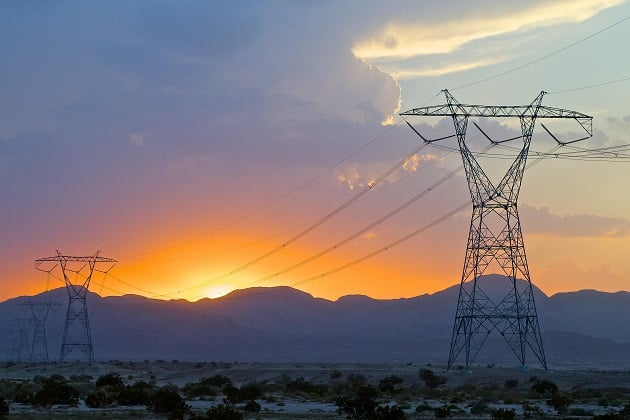
Alternative voices
Erica Mackie, the CEO and co-founder of GRID Alternatives, a group developing community solar projects exclusively for low income customers, told PV Tech that utilities, the solar industry, ratepayers and other stakeholders are currently dealing with “substantial issues” around net metering.
Mackie would not been drawn in to condemn or condone either side’s argument, but did say that the state of California has been working to address solar’s “equity issue”.
“The good news is that California has also been very forward-thinking about the equity issue in solar through a variety of ambitious and successful low-income solar programmes that date back to 2006, to make sure that low-income communities throughout the state do have access to the benefits of distributed renewable energy.”
On a different note, a blog published for Energy Storage News today, John Merritt, director of applications engineering at power converter specialist Ideal Power, argues for increased use of energy storage as a long-term successor to net metering via the grid.
“Quite simply, wholesale net metering rate structures result in a net loss for every kilowatt-hour of energy the PV owner sells to the utility and buys back at a later time,” Merritt wrote.
“However your local utility structures net metering payments, energy storage provides PV owners with a self-use option that removes utility net metering rates from the equation, mitigating losses and shortening paybacks for the system.”

